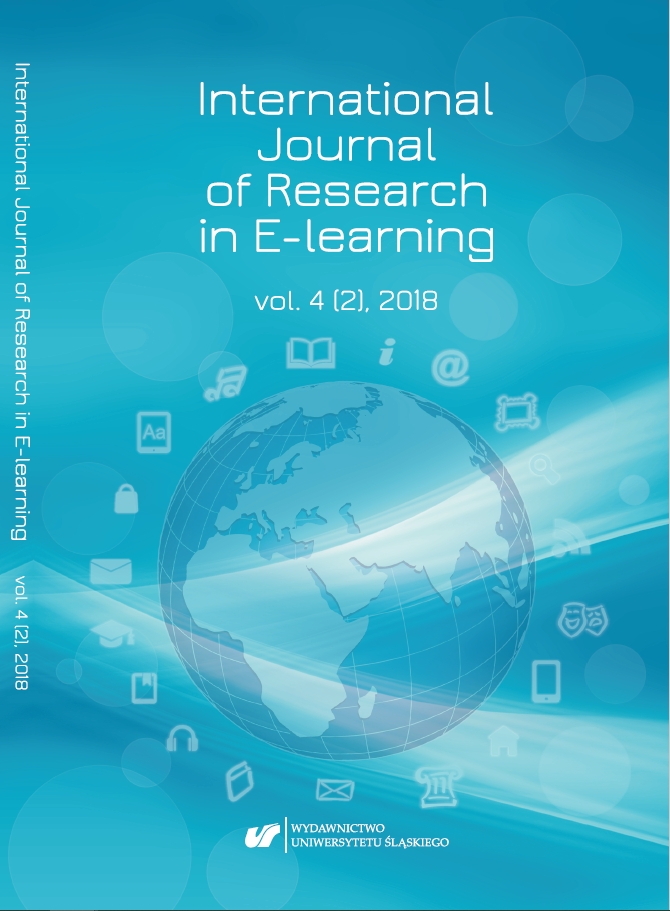Dutta, S., Lanvin, B., & Wunsch-Vincent, S. (2018). Global Innovation Index 2018. Energizing the world with innovation. Accessed 18 December 2018. Retrieved from https://www.wipo.int/edocs/pubdocs/en/wipo_pub_gii_2018.pdf.
Google Scholar
Executive summary World Robotics 2018 Industrial Robots. Accessed 8 December 2018. Retrieved from https://ifr.org/downloads/press2018/Executive_Summary_WR_2018_Industrial.
Google Scholar
ExploreMaking. (2016). Juno Rover: Intro to electronics and coding. Thingiverse. 15 August 2016. Accessed 17 December 2018. Retrieved from https://www.thingiverse.com/thing:1720394.
Google Scholar
Hassan, I. H. (2001). From postmodernism to postmodernity: The local/global context. Philosophy and Literature, 25(1), 1–13. DOI: 10.1353/phl.2001.0011.
Google Scholar
International Federation of Robotics. Global industrial robot sales doubled over the past five years. Accessed 8 December 2018. Retrieved from https://ifr.org/ifr-press-releases/news/global-industrial-robot-sales-doubled-over-the-past-five-years.
Google Scholar
Meeth, L. R. (1978). Interdisciplinary studies: Integration of knowledge and experience. Change, 10, 6–9.
Google Scholar
Morze, N., Smyrnova-Trybulska, E., & Gladun, M. (2018). Selected aspects of IBL in STEM- education. In: E. Smyrnova-Trybulska (Ed.), E-learning and smart learning environment for the preparation of new generation specialists. E-learning series, volume 10 (pp. 361–379). Katowice–Cieszyn: University of Silesia, Studio Noa.
Google Scholar
Morze, N., Strutynska, O., & Umryk, M. (2018). Osvìtnâ Robototehnìka Âk Perspektivnij Naprâm Rozvitku Stem-Osvìti /Educational robotics as a prospective trend in STEM-education development/ (in Ukrainian). In Open Educational E-environment of Modern University, 5. Accessed 22 December 2018. Retrieved from http://openedu.kubg.edu.ua/journal/index.php/openedu/article/view/175/233#.XCVa1fmLTcs.
Google Scholar
Poppy Project – Ergo Jr. Accessed 17 December 2018. Retrieved from https://www.poppy-project.org/en/robots/poppy-ergo-jr.
Google Scholar
Strutynska, O. V. & Umryk, M. A. (2017). ICT tools and trends in research, education and science: Local survey. Open educational e-environment of modern University, 3, 150–160. Accessed 17 December 2018. Retrieved from http://openedu.kubg.edu.ua/journal/index.php/openedu/article/view/79/112.
Google Scholar
Strutynska, O. & Umryk, M. (2018). Analysis of development level of the certain digital competences of the Ukrainian educators. In E. Smyrnova-Trybulska (Ed.), E-learning and smart learning environment for the preparation of new generation specialists (pp. 293–315). Katowice–Cieszyn: University of Silesia, Studio Noa. Retrieved from http://ig.studio-noa.pl/pub/us/E-l-10/10-615.pdf.
Google Scholar
The Fourth Industrial Revolution, by Klaus Schwab. Accessed 18 December 2018. Retrieved from https://www.weforum.org/about/the-fourth-industrial-revolution-by-klaus-.
Google Scholar
Volodchenko, A. Y., Stryzhak, O. Y., & Chrapach, H. S. (2016). Transdisciplìnarnij harakter operacìonalʹnostì rozvitku obdarovanostì učnìvsʹkoï molodì /Transdisciplinary nature of the development of giftedness of school youth/ (in Ukrainian). Navčannâ ta vihovannâ obdarovanoï ditini: teorìâ ta praktika /Teaching and Upbringing of a Gifted Child: Theory and Practice/, 16, 100–110. Retrieved from: http://irbis-nbuv.gov.ua/cgi-bin/irbis_nbuv/cgiirbis_64.exe?C21COM=2&I21.
Google Scholar


